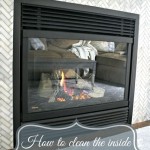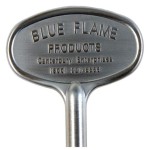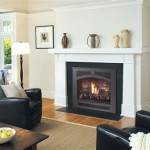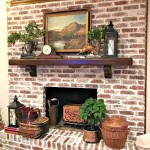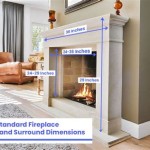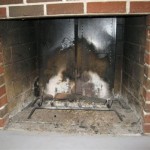The Convenience and Comfort of Gas Fireplaces with Remote Control
Gas fireplaces have become increasingly popular as a convenient and efficient alternative to traditional wood-burning fireplaces. Offering the ambiance and warmth of a fire without the mess and hassle of wood, they provide a modern solution for home heating and aesthetics. Within the realm of gas fireplaces, models equipped with remote controls offer an even greater level of convenience. This article will explore the features, benefits, and considerations associated with gas fireplaces that include remote control functionality.
A gas fireplace is a heating appliance that burns natural gas or propane to produce flames and generate heat. Unlike wood-burning fireplaces, gas fireplaces eliminate the need to chop, haul, and store wood, as well as the arduous task of cleaning up ashes. They are often easier to operate and maintain, making them an attractive option for homeowners seeking a simpler way to enjoy the warmth and visual appeal of a fire. The addition of remote control technology further enhances the user experience by providing convenient control over the fireplace's operation from virtually anywhere in the room.
Enhanced Convenience and Control
The primary benefit of a gas fireplace with remote control lies in its enhanced convenience and control. The remote allows users to adjust various fireplace settings without having to physically approach the unit. This is particularly useful for individuals with mobility limitations, those seeking to adjust the flame from a comfortable distance, or simply for adding an extra layer of ease to the fireplace experience.
Remote controls for gas fireplaces typically offer a range of functions, including on/off operation, flame height adjustment, temperature control, and sometimes even fan speed regulation. The on/off function is self-explanatory, allowing the user to quickly ignite or extinguish the flames. Flame height adjustment enables the user to customize the intensity of the fire, allowing for greater control over the heat output and visual effect. Temperature control, available in some models, allows the fireplace to maintain a consistent room temperature by automatically adjusting the flame height based on the desired setting. Fan speed regulation, if present, allows the user to control the circulation of warm air throughout the room.
Furthermore, many modern gas fireplace remote controls feature programmable timers and thermostat settings. These features allow users to schedule the fireplace to turn on and off at specific times or to maintain a consistent temperature throughout the day. This can be particularly beneficial for energy conservation, as the fireplace can be programmed to operate only when needed. The programmable nature also benefits those who want to pre-heat a room before arrival, enhancing comfort and convenience.
The remote control unit itself is often designed with user-friendliness in mind. Many models feature clear displays, intuitive buttons, and easy-to-understand instructions. Some remotes even incorporate learning capabilities, allowing them to be programmed to control other home entertainment devices, such as televisions and sound systems, further streamlining the user experience.
Safety Features and Considerations
While convenience is a major selling point, safety is paramount when dealing with any heating appliance. Gas fireplaces with remote control are typically equipped with several safety features designed to prevent accidents and ensure safe operation. It's crucial to understand these features and follow all safety guidelines provided by the manufacturer.
One of the most important safety features is the automatic shut-off mechanism. This feature automatically shuts off the gas supply to the fireplace if the pilot light goes out or if the unit detects a malfunction. This prevents the accumulation of unburned gas, which could pose a significant safety hazard. Many models also include a safety screen or barrier to prevent accidental contact with the hot glass front, further minimizing the risk of burns.
Another important safety component is the carbon monoxide (CO) detector. While gas fireplaces are designed to burn fuel efficiently and vent exhaust gases safely, there is always a potential risk of CO leakage. A CO detector provides an early warning in the event of a leak, allowing occupants to evacuate the premises and address the problem promptly. It's recommended to install a CO detector in any home with a gas fireplace, regardless of whether it has a remote control.
Regular maintenance is also crucial for ensuring the safe operation of a gas fireplace. This includes inspecting the unit for leaks, cleaning the burner assembly, and checking the venting system for obstructions. It's recommended to have a qualified technician inspect and service the fireplace annually to ensure that it is functioning properly and safely. Maintaining the remote control itself, by replacing batteries regularly and keeping it in a safe place, also contributes to the longevity and reliability of the system.
When choosing a gas fireplace with remote control, it is essential to select a model that is certified by a recognized testing laboratory, such as CSA International or UL. Certification ensures that the fireplace has been tested and meets established safety standards. It is also important to follow the manufacturer's installation instructions carefully and to have the fireplace installed by a qualified professional.
Installation and Maintenance Requirements
The installation of a gas fireplace with remote control typically requires professional assistance, particularly if it involves running new gas lines or modifying existing venting systems. A qualified technician can ensure that the fireplace is installed correctly and safely, and that it complies with all local building codes and regulations. Proper installation is essential for preventing gas leaks, ensuring efficient combustion, and maximizing the lifespan of the appliance.
Prior to installation, it is important to determine the appropriate size and type of gas fireplace for the space. Factors to consider include the room's square footage, insulation levels, and overall heating needs. A fireplace that is too small may not provide sufficient heat, while one that is too large may overheat the room. Consulting with a fireplace retailer or HVAC professional can help determine the optimal size and type of fireplace for the specific application.
The venting requirements for a gas fireplace will also influence the installation process. There are two main types of gas fireplaces: direct-vent and vent-free. Direct-vent fireplaces vent exhaust gases directly to the outside through a sealed system, while vent-free fireplaces do not require venting but rely on a catalytic converter to reduce emissions. Direct-vent fireplaces are generally considered safer and more efficient, but they require the installation of a venting system, which can add to the cost and complexity of the installation. Vent-free fireplaces are easier to install, but they may not be suitable for all homes due to concerns about indoor air quality.
Once the gas fireplace is installed, regular maintenance is essential for ensuring its continued performance and safety. This includes cleaning the glass front, inspecting the burner assembly, and checking the venting system for obstructions. The remote control should also be maintained by replacing batteries regularly and storing it in a safe place. Annual inspections by a qualified technician are recommended to ensure that the fireplace is functioning properly and safely.
Failure to properly maintain a gas fireplace can lead to a variety of problems, including reduced efficiency, increased emissions, and potential safety hazards. Regular maintenance can help prevent these problems and extend the lifespan of the appliance. Consulting the manufacturer's instructions for specific maintenance recommendations is essential.
In conclusion, gas fireplaces with remote control offer a convenient and efficient way to enjoy the warmth and ambiance of a fire. The remote control functionality provides enhanced control over the fireplace's operation, while safety features and regular maintenance ensure safe and reliable performance. When choosing a gas fireplace with remote control, it is important to consider the size of the space, venting requirements, and safety features, as well as to have the fireplace installed and maintained by a qualified professional. By following these guidelines, homeowners can enjoy the benefits of a gas fireplace with remote control for years to come.

Gas Fireplace Remotes More Fireplaceremotecontrols Com

How Do Remote Control Gas Fires Work Direct Fireplaces

How To Use And Maintain Your Gas Stove Chesneys

How Do Remote Control Gas Fires Work Direct Fireplaces

Skytech Manual Remote Control With Timer For Gas Logs Fine S

Valor Gv60 Max Remote Receiver 4002251 4002422 G6r H3tv4 R3au Friendly Fires

Gas Fireplace Remote Control Guide Fireplaces Direct Learning Center

Outdoor Vent Free 42 Complete Gas Fireplace Stainless Steel With Remote Control Vre3200 Vre3242

Sit Gas Fireplace Or Stove Remote Control Wall Bracket Hechler S Mainstreet Hearth Home Troy Missouri

Real Fyre Electronic Remote Transmitter Only
Related Posts

